|
After another failed attempt at electrifying to Port
Jefferson, then only to Northport in the early 1980's (which is why
there are double platforms in Greenlawn), a compromise was found by
then Congressman Robert Mrazek who represented these communities.
For $20 million, I think and not certain where the Fed funds came
from, the carrier received the engines and C1's. This equipment also
made a midday round trip to Huntington but it didn't last too long.
Info: Anonymous.
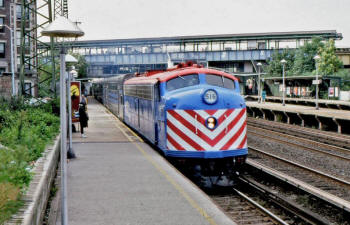 The project began in 1988 to purchase Bilevel cars
along with Dual-Mode Locomotives, so then at that point, the
rebuilding of 10 FL9's into FL9AC's took place. 7 went to Metro
North, and 3 to LIRR. 10 Prototype C1 (not C3) Bilevel cars were
built by Tokyu, and placed into service in 1991 with 2 leased Metra
Units #516, #521 that only lasted a week until 4 GP38-2's (251, 259,
266, 269) were modified with special adaptor plugs for the coaches,
and 259/266 were equipped with the M1 Pin type couplers. 251/269
could be used, but at that time if those were used, the engines had
to turn around at Port Jeff Wye, or at the Montauk Cutoff to be
placed on the respective end of the train. Also until the FL9AC's
were finally placed into testing service in June, 1994, FA-2 Powercab #608 was modified into a B unit where the cab was cut off,
covered over in stainless steel, and had a new Caterpillar sled put
into it for HEP. Info: Neil Feldman The project began in 1988 to purchase Bilevel cars
along with Dual-Mode Locomotives, so then at that point, the
rebuilding of 10 FL9's into FL9AC's took place. 7 went to Metro
North, and 3 to LIRR. 10 Prototype C1 (not C3) Bilevel cars were
built by Tokyu, and placed into service in 1991 with 2 leased Metra
Units #516, #521 that only lasted a week until 4 GP38-2's (251, 259,
266, 269) were modified with special adaptor plugs for the coaches,
and 259/266 were equipped with the M1 Pin type couplers. 251/269
could be used, but at that time if those were used, the engines had
to turn around at Port Jeff Wye, or at the Montauk Cutoff to be
placed on the respective end of the train. Also until the FL9AC's
were finally placed into testing service in June, 1994, FA-2 Powercab #608 was modified into a B unit where the cab was cut off,
covered over in stainless steel, and had a new Caterpillar sled put
into it for HEP. Info: Neil Feldman
Chicago Metra test engine #516 at Woodside Station,
1991. Archive: Hayk Rakidjian
|
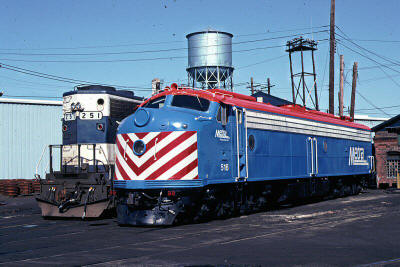
Metra #516 at Dunton 7/08/1991 Photo/Archive: Jay Bendersky |
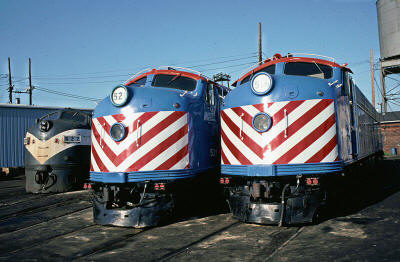
Metra #521, #516 at Dunton Photo/Archive: Jay Bendersky
|
|
The C1 is a type of bilevel commuter passenger car
built by the Tokyu Car Corporation for the Long Island Rail Road
(LIRR). Tokyu built ten cars in 1990–1991 as a precursor to the
larger C3 order which would be built by Kawasaki in the late 1990s.
The cars were designed by Commonwealth Engineering (Comeng), one of
the last projects that firm undertook before closing in 1990. After
the arrival of the C3s, the Long Island Rail Road sold the C1s to
private owners.
Tokyu constructed the cars between 1990–1991, with
deliveries completing in early 1991. Trains began running in August
1991. The cars ran well and were well-received by commuters. The
rebuilt FL9 locomotives, into FL9AC units, allowed operation through
the East River Tunnels into Pennsylvania Station. The LIRR
proceeded with a full production order in 1994. Several former
Comeng engineers drafted the specification for what became the C3
car. This design was based on the C1, but updated based on several
years experience with the cars and feedback from passengers.
The C1s were mechanically incompatible with the C3s and were stored
as the new cars arrived in 1997–1998. The LIRR sold them to Mid
Atlantic Rail Car in 1999. Iowa Pacific Holdings acquired them in
2007 for use on various excursion services. Info: Wiki |
|
|
#3100 HEP UNIT |
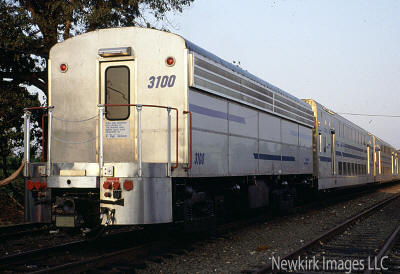
The C1s are not compatible with the C3s, other than the coupler and
480 HEP, no other equipment is compatible with C1s as they were
built with 32 volt components, the same as the M1s and M3s. Power
went to a translator/converter box on the FL9ACs as the C3 is 64
volt equipment. Therefore, the crew of electricians in the back shop worked their magic and
produced in-house a unit capable of 480vac and 600vdc using the turn
of a switch. Sheathed in stainless steel to match the C1 cars by the
machinists, right down to creating the blue decals to somewhat match
the cars. It was planned to be a stationary unit to supply yard
power after the end of the prototype dual mode project, but fuel
delivery problems from the original (ancient) fuel tank led to
engine starvation problems, and eventually it was considered junk
that was no longer usable to the LIRR.
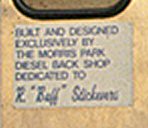 The
plaque on the door was dedicated to Robert "Buff" Stickevers, who
had emergency heart surgery just prior to the units completion, but
sadly died during the procedure. He redid all the piping to change
the unit from a loco to a car. The plaque reads: Built and dedicated
exclusively by the Morris Park Diesel Back Shop Dedicated to R.
“Buff” Stickevers who passed away 1/23/91. The Buff is for Buffalo
his nickname. I believe he worked in the Sheet Metal's Union in
Jamaica as featured on NEWSDAY front page when the 1987 strike
ended. Info: Brian Stickevers, son. The
plaque on the door was dedicated to Robert "Buff" Stickevers, who
had emergency heart surgery just prior to the units completion, but
sadly died during the procedure. He redid all the piping to change
the unit from a loco to a car. The plaque reads: Built and dedicated
exclusively by the Morris Park Diesel Back Shop Dedicated to R.
“Buff” Stickevers who passed away 1/23/91. The Buff is for Buffalo
his nickname. I believe he worked in the Sheet Metal's Union in
Jamaica as featured on NEWSDAY front page when the 1987 strike
ended. Info: Brian Stickevers, son.
ex-WM #304, LIRR #608 renumbered #3100 in 1991 provided HEP to the
C1 bilevels before the FL9AC's arrived on property. This is the "A"
end. Note: Sent to scrap 5/17/2018 Photo/Archive/Info:
Bill Mangahas
|
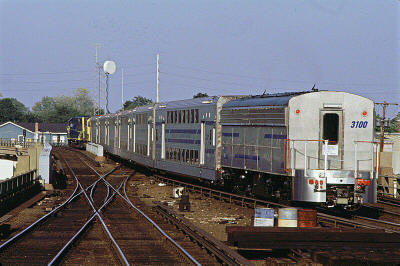
#3100 at DIVIDE 9/1991 Photo/Archive: Bill Mangahas |
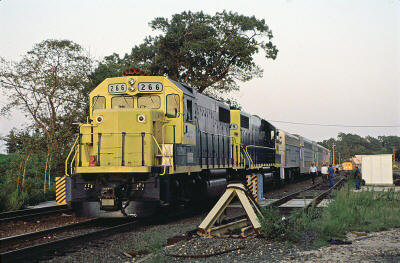
GP38-2 #266, #259 at Port Jefferson 9/1991 Photo/Archive: Bill
Mangahas |
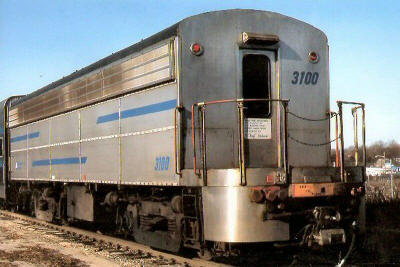
LIRR #3100 - Port Jefferson 12/06/1992 Photo/Archive: M. G.
Lovis |
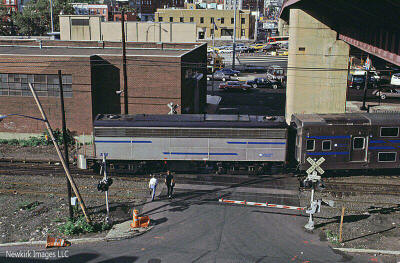
LIRR #3100 9/20/1991 eastbound LI City, 53rd Ave and 11th St.
Photo/Archive: Bill Mangahas |
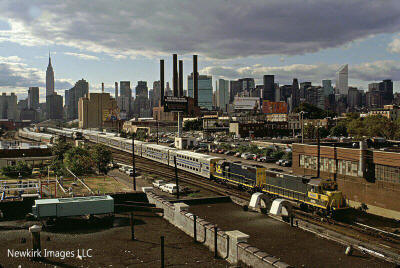
C1 train eastbound leaving LI City 9/20/1991 Photo/Archive:
Bill Mangahas |
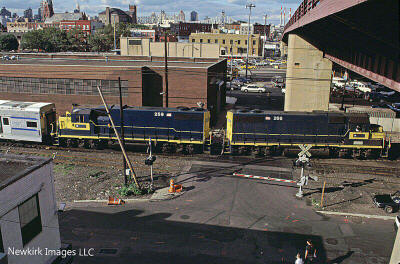
LIRR GP38-2 #266, #259 eastbound LI City 9/20/1991
Photo/Archive: Bill Mangahas |
FL9AC ENGINES |
|
The FL-9ACs were created specifically for trial
purposes for use with the lone C1 consist to evaluate the
feasibility of a one-seat ride to Penn Station, NY via the Port
Jefferson branch. The commuters there, at the time, were very
disgruntled that no electrification was planned to happen anytime
soon, as had happened on the Main Line from KO (Ronkonkoma) west.
Most of them just drove and parked at the nearest station to their
homes on the Main Line to avoid the "Huntington Shuffle". This
caused parking nightmares at these stations. An example also is
Patchogue, after the KO job was complete, the once-crowded PD
(Patchogue) parking lot became sparse when the crowd went to KO for
the one-seat ride (and long nap). |
FL9ACs
|
| Numbers |
Built |
Serial |
Heritage |
| 300 |
07-1957 |
21949 |
ex-NH 2003,
PC/CR 5003, MN 2001 |
| 301 |
01-1957 |
21946 |
ex-NH 2000,
PC/CR 5000, MN 2025 |
| 302 |
?-1960 |
21993 |
ex-NH 2047,
PC/CR 5047 |
|
The FL9s were rebuilt in 1991 by Republic Locomotive Works into
FL9ACs to run on
LIRR over riding 3rd rail and Diesel power. They were specially
equipped to run with the
C1 passenger cars.

FL9 #300-#301 delivered 8/31/1992 - Semaphore 9/1992 |
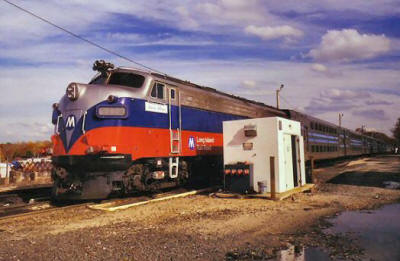
FL9AC #300 named unit: “Kevin Blum” Port Jefferson 10/1996
Photo/Archive: William J. Skeats |
_small.jpg)
FL9AC #300 eastbound LI City 53rd Ave and 11th St. - View N 11/1992
Archive: Dave Keller |
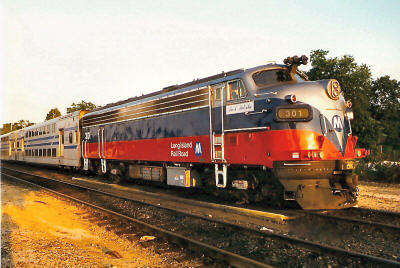
FL9AC #301 named unit: “Mark McEntee” Port Jefferson 8/1996 Photo
William J. Skeats |
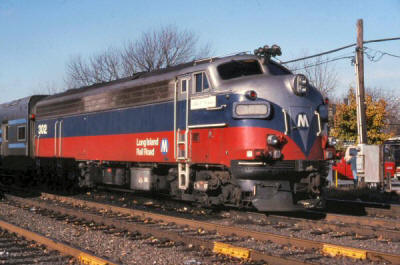
FL9AC #303 named unit: “Mike O’Connor” 11/1998 Archive: Dave
Keller |
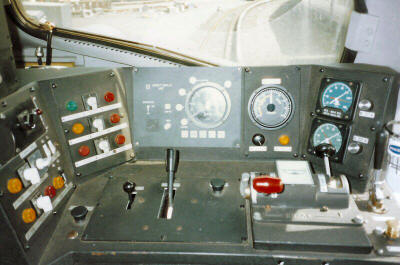
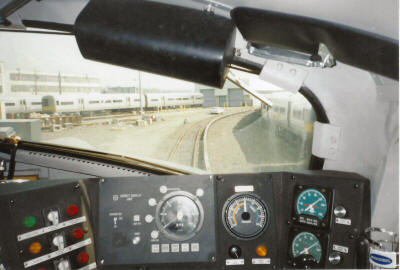
FL9AC cab interior views c.1992+ Photos/Archive: Mike Boland |
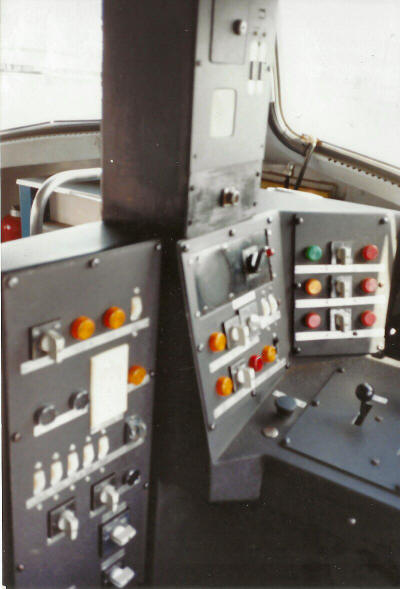 |
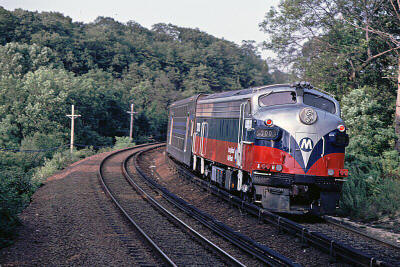
FL9AC #300 at Cold Spring Harbor - 9/1994 Photo/Archive: Bill
Mangahas |
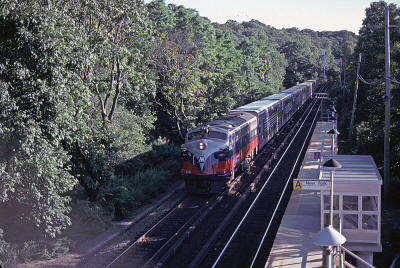
FL9AC #301 at Cold Spring Harbor - 9/1994 Photo/Archive: Bill
Mangahas |
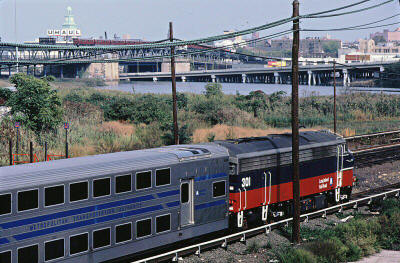
FL9AC #301 passing Shea Stadium - View NE 5/1991 Photo/Archive: Bill
Mangahas |
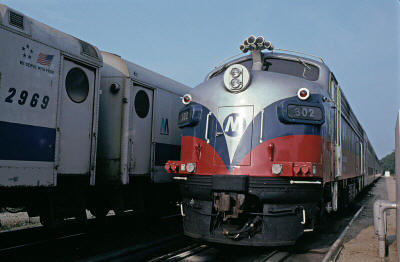
FL9AC #302 at Port Jefferson - 6/1994 Photo/Archive: Bill Mangahas |
|
Note: After the 1964 World's Fair, the
additional tracks were outfitted for mods and testing of the M1s.
Subsequently used for the same on the M2, M3, C1/FL9A. It sat
dormant for about 20 years and is now used for EIC cleaning. EIC is
Extraordinary Interior Cleaning. Usually every 60 days, the car is
cleaned from top to bottom, seat cushions removed, etc. MUs were
done in West Sunnyside Yard, but now at Shea because of the Hudson
Yards work. (2019) |
|
C1 BILEVEL PASSENGER
CARS |
|
The 10 C1 bilevel cars date from 1990/1991 - Tokyu
Car Company of Japan.
There were five married pairs: 3001/3002; 3003/3004; 3005/3006;
3007/3008 and 3009/3010.
They were equipped with MU couplers requiring specially-modified
Diesel locomotives for service. Research: Mike McEnaney
The C1 stands 14 feet 6 inches tall. This was necessary in order for
the car to fit through the East River Tunnels, and shorter than
similar designs such as the gallery cars used in Chicago or Amtrak's
Superliners, both of which exceed 15 feet. The cars are 82 feet 2
inches long and 10 feet wide. C1 cars has a "bottom fluting" that
run the entire length of the car as does a boxcar, similar to late
PRR boxcars like the X51, 55 and 56. The two local door indicating
lights are above the door center.
The cars had vestibules at both ends. Designed for use at high-level
platforms, so the doors sit roughly 4 feet 3 inches above the rail.
The interior is split into lower and upper levels, with accessible
seating on the entrance level. On the upper and lower levels seating
is 3–2. This dense arrangement permits a maximum capacity of 180–190
passengers. Each level measures 6 feet 5 inches from floor to
ceiling. Passenger response to the 3–2 seating was poor, leading to
the adoption of 2–2 seating in the C3. Info: Wiki
|